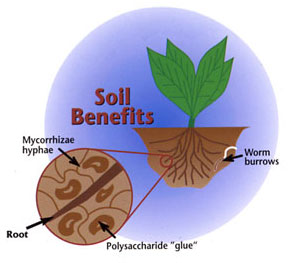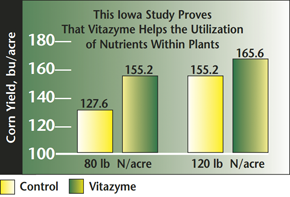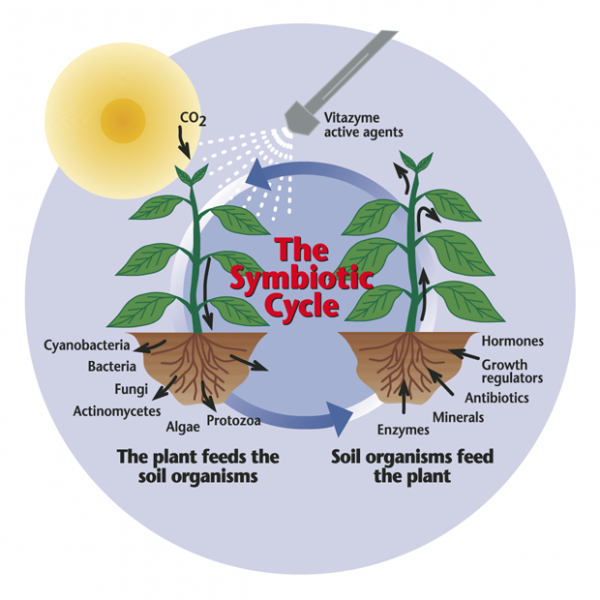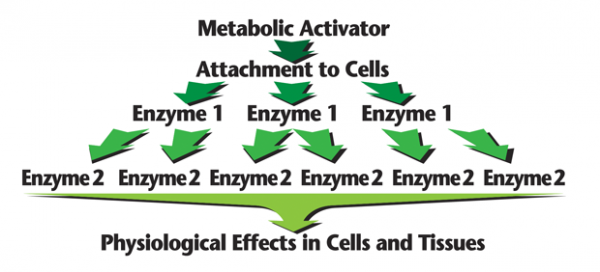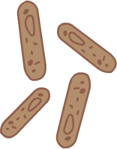Fifty years ago, a dedicated amateur made the first controlled crosses of these fragrant tropicals.
Richard A. Criley & Jim Little
Published April 01, 1991
Plumerias, which are native to the semideciduous forests of southern Mexico and south into Panama, were described as early as 1522 in the Badianus Manuscripts by Francisco de Mendoza, a Spanish priest who was one of the first explorers of the region. According to this collection of Aztec lore, the Indians used the plants for medicinal purposes that ranged from poultices to emetics. Soon the hardy shrub with beautiful fragrant flowers was a favorite of the Spanish, who planted it around their churches, monasteries, and cemeteries, and took it with them as they explored the world.
The plumeria has also acquired religious significance in India, where it is known as the temple tree or pagoda tree. There, Buddhists and Moslems regard the tree as a symbol of immortality because of its capacity to produces flowers from stems severed from the parent tree. Hindus use the flower as a votive offering to the gods.
The flower’s botanical name honors the seventeenth-century French botanist, Charles Plumier. Some horticultural historians say that the common name, frangipani, was derived from the French word, frangipanier, meaning coagulated milk, which its sticky white latex resembles. Others believe it honors a twelfth-century Italian who compounded a perfume similar to that of these tropical flowers that were discovered some four centuries later.
Because Plumeria flowers and leaves come in so many forms, taxonomists once held that there could be forty-five or more species. Of course, these variations are not enough to justify naming a separate species. The “lumpers” of the taxonomic trade-as well as Hortus Third-now say there are perhaps only seven or eight species, and that most of those in the popular books on tropical flowers are really only variations of Plumeria rubra. “Splitters” among taxonomists still dissect out some other species, as do floras of Mexico and other Central American countries.
The first plumeria was introduced into Hawaii in 1860. It was a yellow brought in by Wilhelm Hillebrand, a German physician and botanist who lived in Hawaii from 1851 to 1871. The first red is thought to have arrived from Mexico around the turn of the century, either via a Mrs. Paul Neumann, wife of a consul stationed in Honolulu, or a Mr. Gifford, landscaper for the Royal Hawaiian Hotel. The white ‘Singapore’ plumeria was brought to Hawaii in 1931 by Harold Lyon, director of a sugar cane research station, from a large collection established in 1913 at the Singapore Botanical Gardens.
Since then, natural hybridization has given rise to many variations in form and scent, making them popular among collectors, who in 1979 established their own admiration society for this plant, the Plumeria Society of America.
But as late as between plumerias. In that year, William M. Moragne Sr. became manager of Grove Farm Plantation on Kauai, which specialized in sugar cane, pineapple, and cattle. Moragne (pronounced “Mor-AY-nee”), who was born in Hilo, Hawaii, in 1905 and graduated from the University of Hawaii with a major in civil engineering and sugar technology, was an avid lover of plants and had always wanted to experiment with cross-pollinating plumerias. But because there were no books to tell him how to proceed, he had to learn on his own.
The plumeria’s pistil-the stigma, style, and ovary that are the female reproductive parts-is located at the bottom of a very deep trumpet, and efforts to tear away the petals to reach the pistil produced a torrent of sticky white latex. So Moragne snipped off the petals at the tube and allowed them to “bleed” to get rid of the latex. The pollen of the mother flower was carefully scraped away before introducing the pollen of the male parent. But after three years of effort, he failed to produce a single seed pod.
Then in 1953, reflecting on the fact that the flowers were deep throated, Moragne realized that they would have to be pollinated naturally by little bugs crawling down into the throat and climbing around the pistil. In doing so, they would leave some pollen grains under the pistil, as well as on top. Perhaps, he reasoned, he should also place pollen under the pistil. He carefully transferred pollen to the sides and base of the pistils of four blossoms through an incision cut into the side of the flower tubes. His pollinations were carried out in the morning on newly opened flowers. After the pollen was transferred, he covered the pollinated area with plastic tape to prevent uncontrolled pollen from being carried in by insects.
Several weeks later, he realized that seed pods were beginning to swell the base of the flowers he had cross-pollinated. From those seeds he obtained 283 seedlings. The thirty-five he kept produced small trees with large, brilliant, fragrant blossoms, some of which bloom for six to eight months. Moragne at first numbered the seedlings as they came into bloom-some took five years to bloom, others as long as eighteen-but then began to select the largest flowers among the more brightly colored ones to name for the women of his family.
Only three of his eleven named hybrids- ‘Jean Moragne Jr.’, named for a daughter-in-law, and ‘Edi Cooke’ and ‘Julie Cooke’, named for two of his granddaughters-have been registered with the Plumeria Society of America, which came into existence just four years before his death in 1983*. In the late 1980’s a renewed interest in plumeria led to great demand for cuttings of his hybrids at botanical garden plant sales. But as with many vegetatively propagated plants, cuttings had found there way into many gardens in Hawaii and abroad, sometimes with a name change along the way.
Now, more than forty years after he developed his series of hybrids, there is confusion about the parentage of these historic crosses. According to the Register of Plumeria Culture, the male parent is ‘Scott Pratt’ and the female parent is called ‘Daisy Wilcox’. But in a 1974 newspaper article, Moragne was quoted as saying his hybrids were a cross between ‘Grove Farm’ and an otherwise unknown ‘Koloa Red’. In trying to update the Register for the society in 1988, John P. Oliver asked for help in finding out which was right.
Although Moragne reportedly kept records relating to his breeding breakthrough, none can be located today. The answers had to be found by talking to his daughters, Mary Moragne Cooke, Sally Moragne Mist, and Katie Moragne Bartness, and a long-time plantsman on Kauai, Howard Yamamoto.
Among the plumerias in Moragne’s garden near Lihue, Kauai, was the cutting of a chance seedling originally collected from Lawaii Kai on the southern side of Kauai by plumeria enthusiast Alexander McBryde. The cutting was planted there when the plantation was still being managed by a couple named Ralph and Daisy Wilcox. Daisy Wilcox demurred at the suggestion that the flower be named for her, and Moragne-whether bowing to her wishes or simply because he preferred place names, called it ‘Grove Farm’. Nevertheless, the name ‘Daisy Wilcox’ stuck among plumeria growers on the island, and ‘Daisy Wilcox’ it became officially when plumerias began to be registered many years later. ‘Daisy Wilcox’, a large, white-flowered plumeria with a pink stripe on the underside of the petals, bears little resemblance to a plumeria now registered as ‘Grove Farm’, a grainy pink one also found on Kauai. The large flower and tree size of most of the named selections, coupled with a letter written by Moragne in 1973, leave no doubt that the ‘Grove Farm’ plant he used was the large-flowered one.
Records relating to the male parent are even more conflicting. The only place the name ‘Koloa Red’ appears is in a 1974 newspaper interview. It may have been a reporting or typographical error; no one knows. In a 1975 account, Mary Moragne Cooke related that ‘Grove Farm’ was crossed with ‘Kohala Red’; more recently, she discovered a slide dated 1955 that identifies the hybrid here father named after here as a cross of ‘Kohala’ on ‘Grove Farm’.
There is little question that ‘Kohala Red’ is a synonym for a dark red plumeria eventually registered as ‘Scott Pratt”. Pratt was the farm manager of the Kohala Sugar Plantations on the island of Hawaii. Once again, Moragne preferred the place name.
Cuttings from the series provided by Moragne to University of Hawaii plumeria breeder Ted Chinn in 1967 carried the notation in the accession book: ‘Kohala’ on ‘Grove Farm’ or ‘Scott Pratt’ on ‘Daisy Wilcox’. Both are right, given the synonymous names for the red and the confusion over the large white. But due to the registration of plumeria names and descriptions with the Plumeria Society of America, ‘Scott Pratt’ must be listed as the male parent and ‘Daisy Wilcox’ as the female parent for the Moragne series. (This is an unrecorded marriage in the history of Hawaii’s long-time or kama’aina families, which may well support Moragne’s preference for place names.)
None of the surviving selections have the small flowers or dark red color of ‘Scott Pratt’. The strong yellows in some of them are not seen in either of the parents, but this isn’t surprising given that Moragne selected for large size and colorful petals.
More than twenty years after the crosses were made, recollections are also vague about how many flowers Moragne actually attempted to pollinate. It is well documented that he harvested seed from the pods of four flowers and from them produced 283 seedlings, naming his favorites for his wife, “Jean Sr.”; daughters Mary, Sally and Katie; daughter-in-law “Jean Jr.”; and granddaughters Cindy, Kimi, Julie, Edi, Cathy, and Kelly.
He planted fifteen around his home, and set out nine other hybrids and the rest of his breeding collection along the Nawiliwili highway that once led into Grove Farm, near the present-day Ulu Ko subdivision. The plants are not identified-Moragne removed the tags before planting them-but are still much admired, so much that many cuttings have been poached over the years.
When asked why he had not continued his pollination work, Moragne responded that with 400 potted orchids and a garden of heliconias and gingers, he didn’t have time or space for another 283 plumerias. He had selected the best and that was enough.
Today, a few of the best of the Moragne hybrids are used for leis or worn pinned in the hair or wired as nosegays. From their ‘Daisy Wilcox’ parentage, some-primarily the numbered ones-inherited a rangy growth habit, but others are more compact and suited to landscape use.
Moragne gave cuttings to Foster Garden, the University of Hawaii, And the Pacific Tropical Botanical Garden. Shortly before his death, he gave cuttings to Jim Little, a photographer and university instructor and amateur botanist whom he also taught how to hand-pollinate plumerias. Little and a few others plumeria hobbyists have kept Moragne’s legacy alive.
His hybrids represent a rare ability to choose only the best from a seedling population. It has been a long time since those initial plants were chosen, and their distribution has been limited by the isolation of the source and the lack of awareness among individual nurserymen of the uniqueness of these plants. It is time that these brilliantly colored, fragrant trees receive the recognition they deserve through more widespread propagation and use in tropical and protected subtropical landscapes.
RESOURCES & SOURCES
Jim Little Nursery & Farms, Hawaii
Richard A. Criley, University of Hawaii at Manoa
The Plumeria People, Houston, Texas
The Exotic Plumeria (Frangipani), by E. H. Thornton and S. H. Thornton, 1985
The Handbook on Plumeria Culture, by R. Eggenberger and M. H. Eggenberger, 1988
Dr. Richard A. Criley is professor of horticulture at the University of Hawaii at Manoa. Jim Little is a retired assistant professor since 2000. He runs one of the largest plumeria nurseries, located in Hawaii .
*The Plumeria Society of America was formed in 1979.
 , transplant into larger pots. Normally I will use 1 gal pots, but this year I’m using 7.5 gal squat pots. Approximately 14 days after planting in the plugs.
, transplant into larger pots. Normally I will use 1 gal pots, but this year I’m using 7.5 gal squat pots. Approximately 14 days after planting in the plugs.
